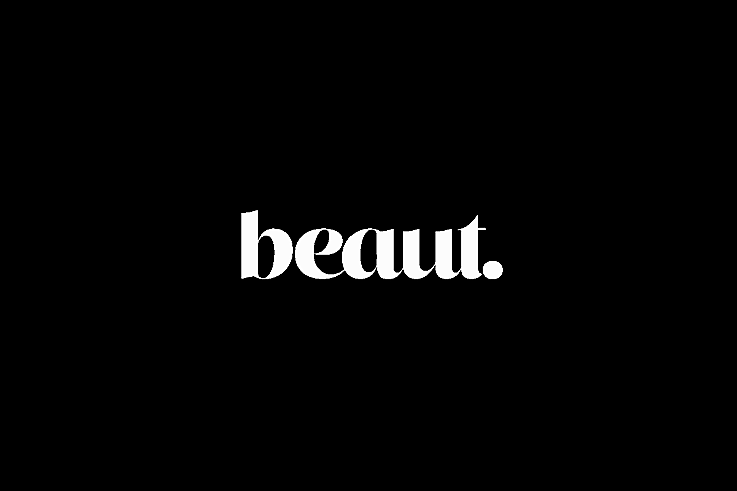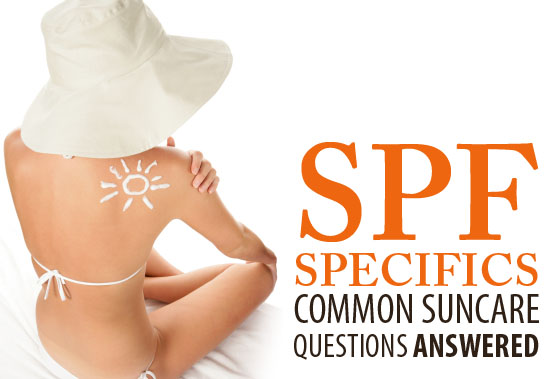

We don't normally post emails we receive from brands verbatim, always preferring to serve you up unique content that has our own editorial take on it, but today we're making an exception for this SPF advice from Janette Ryan, pharmacy training manager for the Vichy and La Roche-Posay brands, two companies we really trust for sun protection products.
There is a huge amount of confusion and mis-information out there about what sort of SPFs to use, not to mention how and when to use them. So, here's Janette's advice to see you through the summer, and if you have any other questions, leave us a comment and we'll see if we can get 'em answered.
1. Is the sun stronger and weaker at certain hours of the day?
The sun becomes stronger and weaker at certain hours of the day, this is due to the position of the sun in the sky. It is advisable to avoid the sun between 11am-3pm when Ultra Violet Rays are highest. People should adopt sun smart practices all day long in order to protect their skin from skin cancers and premature ageing of the skin.
2. How can I get a safe tan?
All tanning is UV damage. The only safe tan is fake tan. UV damage to the skin is permanent. It also builds up - that means damage to the skin in one year is added to damage done in previous years. In later life this can lead to skin cancer. Skin cancer can take 20 to 30 years to develop, so the rates of skin cancer today reflect the trends of the 70s and 80s. 90% of all skin cancers are preventable. Virtually all the risk comes from the sun and sun beds**
A lot of women like the sun tanned look so should opt for wearing fake tan and use a high UVA/ UVB protection while in the sun, playing sport etc to prevent from damaging their skin and increasing their risk of skin cancer later on and causing premature ageing.
3. Is it ok to use a sunbed if you don't use them often?
Never use sunbeds. In July 2009 a report published by the international agency for research on cancer showed that the risk of skin cancer is increased by 75% when sunbed usage starts under the age of 30. The intensity of UV rays from sunbeds can be anything up to 15 times stronger than the mediterranean midday sun. Beware of tanning beds because they use UVA rays. A UVA tan does not help protect the skin from further sun damage; it merely produces colour and a false sense of protection from the sun.
Both La Roche-Posay, Vichy and the Irish Cancer Society would never recommend anyone use a sunbed. At the recent launch of May Melanoma Awareness launch, the Minister for Health said the department are currently looking into banning sunbeds for under 18s to begin with before the plan of a total ban. They are currently looking into introducing this legislation later this month.
4. What's the difference between UVB rays and UVA Rays?
- UVB= Burning Browning
- UVA = Ageing , Allergies
UVB rays are the rays which cause sunburn and are dangerous as they can cause cataracts (clouding of the eye lens), and immune system damage. They also contribute to skin cancer. Melanoma, the most dangerous form of skin cancer, is thought to be associated with severe UVB sunburns that occur before the age of 20. Most UVB rays are absorbed by the ozone layer, but enough of these rays pass through to cause serious damage.
UVA rays cause skin ageing and contribute to skin cancer, such as melanoma. Because UVA rays pass effortlessly through the ozone layer (the protective layer of atmosphere, or shield, surrounding the earth), they make up the majority of our sun exposure. UVA are constant, all daylong, throughout the year, including the coldest months as UVAs are not stopped by clouds or windows. Unlike UVB rays, UVA rays penetrate deep within the skin’s layers (all the way to the dermis) where they cause severe damage to the skin’s supporting structure.
This helps to speed up the skin’s natural ageing process and contributes to a lack of elasticity and density in the skin. This process is considered photo-ageing. Without daily protection against UVA rays skin ages faster.
5. Which is the most important to be protected from – UVA or UVB?
You need to be protected from both. Always choose a broad-spectrum high protection which provides high protection against both. Always apply your sun protection around 20 minutes before going out in the sun and re-apply every one-to-two hours.
6. Can I still get burnt on a cloudy day?
Yes. You can still get burnt on a cloudy day. The UV rays present throughout the day vary in intensity. UVA rays are present from sunrise to sunset all year round and are not blocked by clouds, where as UVB rays are partially blocked by clouds. UVB rays are more intense in Ireland from April to September. People can check the intensity of the UV rays by logging on to on Met Eireann’s daily UV index/sunburn warning index.
7. What does SPF stand for and does it provide sufficient protection against UVA and UVB?
SPF stands for (Sun Protection Factor). SPF is a measurement of protection from UVB rays, the rays which cause Burning. When choosing a sun protection, you also need to look for a high UVA protection as well as a high SPF protection. This is not only to protect against the UVB rays which burn but also the UVA rays which are responsible for sun allergies, ageing and also skin cancer. When choosing a sun protection – always choose broad-spectrum (protects against both) high protection.
Advertised
8. What do the different SPF values mean?
According to the EU commission, Sun Protection Factors are classified by categories, which can be indicated on the front or back panel of the packaging:
- Very high protection: 50+
- High protection: 30
- Medium protection: 15-20
- Low protection: 6-10
The Irish Cancer Society recommends you use a SPF no lower than 15, La Roche-Posay and Vichy state SPF20. The EU also identifies ![]() symbol as an indication of sufficient protection against UVA rays.
symbol as an indication of sufficient protection against UVA rays.
9. What type of suncream should I use?
The European Recommendation states that the level of UVA protection in all suncare must be at least 1/3 of the level of UVB =SPF. Once the suncream provides high broad spectrum protection and meet EU requirements, its down to personal preference on textures and application.
If youre unsure, ask your pharmacist. There is a huge choice of textures and applications now from sprays, gels , fluid and creamier textures. Men tend to prefer water resistant gels as they don’t get stuck in the hair on their arms and do not run if perspiring etc. La Roche-Posay Anthelios and Vichy Capital Soleil come in a wide variety of textures and appliations to suit all individuals and preferences and are available in SPF 20, 30 and 50+.
Both Vichy and La Roche-Posay have developed multi-positional aerosol sprays, pumps, sprays, lotions etc which are tested to the highest standards and provide the highest levels of protection. Provided the product you are choosing meet the requirements recommended by the EU and you apply as directed, (and every 1-2 hours), whatever application fits your personal preference is suitable.
10. If my SPF claims to be water resistant can I get away with only applying once?
Always reapply sunscreen after swimming even if water resistant, sun screen should be reapplied every one-to-two hours. There is no such thing as all day protection.
11. Can I use my leftover suncream from year to year or does it have an expiry date?
All sunscreen formulations vary, but sun protection in general has an average three years’ expiry date according to the FDA - providing they are unopened! Any opened product should not be re-used the next year. Temperature variations during the year may alter filters’ stability. Also - if you go by the necessary recommended quantity for each application, your product should not last more than a year.
12. Does a suncream with SPF 30 last twice as long as SPF 15?
No, SPF30 is an indication of the sun protection level. Wearing sunscreen should not provide a false sense of security about prolonged sun exposure. No sunscreen provides 100 percent protection from UVB or UVA rays. For example, if you use a sunscreen with an SPF 30 rather than one with an SPF 15, it doesn't mean you can stay in the sun twice as long, it just means an SPF30 will filter out more UVB rays than an SPF of 15.
Always choose a sun protection which offers a high UVA and UVB protection. Also, sunscreen needs to be applied in generous amounts to achieve the level of protection indicated on the bottle and always need to be re-applied every one-to-two hours or after being in the water regardless of its protection level.
13. Who is most at risk of developing skin cancer?
In Ireland, one in every eight men and one in every ten women will develop skin cancer by the age of 74 years**
66% of Irish people have a higher risk of developing Skin Cancer because of their skin type **
The most common cancer in Ireland is skin cancer with just over 8000 new cases diagnosed in 2008. Up to 80% of the sun damage we receive is before the age of 20, so protection in children is vital**
14. If my skin doesn't burn do I still need to use sun protection?
Yes. A difficult message to get across is that tanned skin is damaged skin. What is difficult for most people to see is that people with the ‘nice tan’ have damaged their skin and by continuous exposure without sufficient protection, their skin will age quicker than others and also will be more at risk of skin cancer if not in the immediate term most definitely later in life because of in adequate sun protection throughout their life.
UV rays react with a chemical called melanin that's found in most people's skin. Melanin is your first defence against the sun. It absorbs dangerous UV rays before they do serious skin damage. Melanin is found in different concentrations and colours, resulting in different skin colours. The lighter your natural skin colour, the less melanin it has to absorb UV and protect itself. The darker your natural skin colour, the more melanin it has to protect itself. (But both dark- and light-skinned people need protection from UV rays because any tanning or burning causes skin damage.)
Advertised
Also, people, especially kids, with fair complexions - lighter skin and eye colour - are more likely to have freckles because there's less melanin in their skin.
*NCRI
**www.cancer.ie/sunsmart



